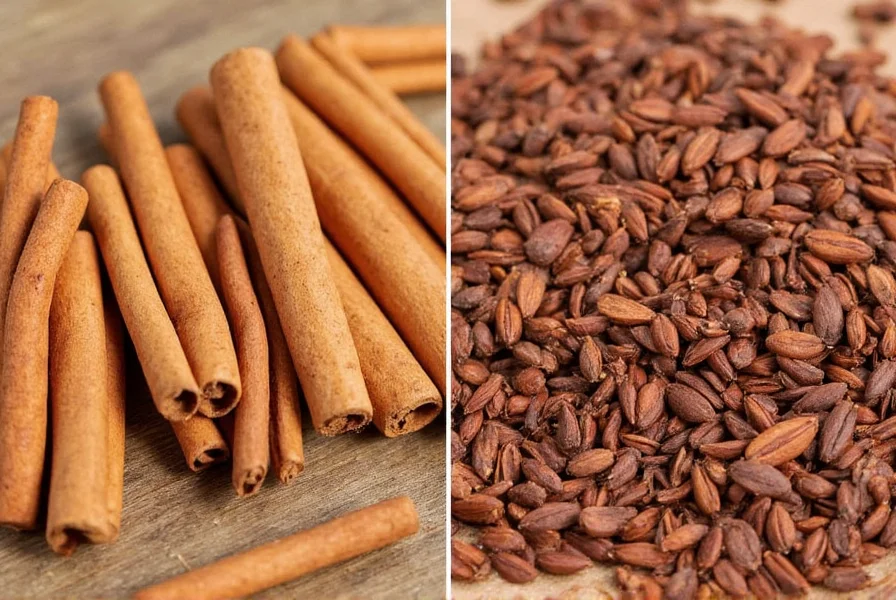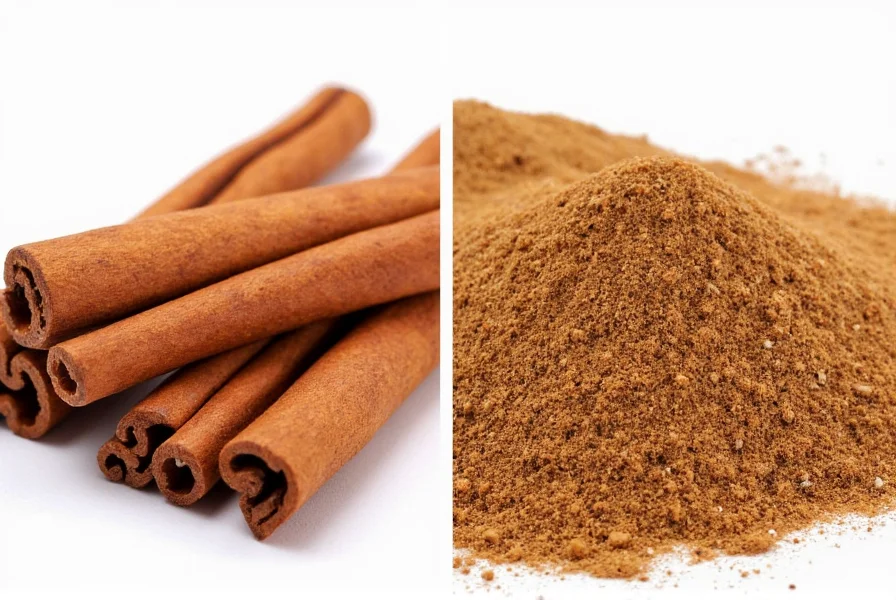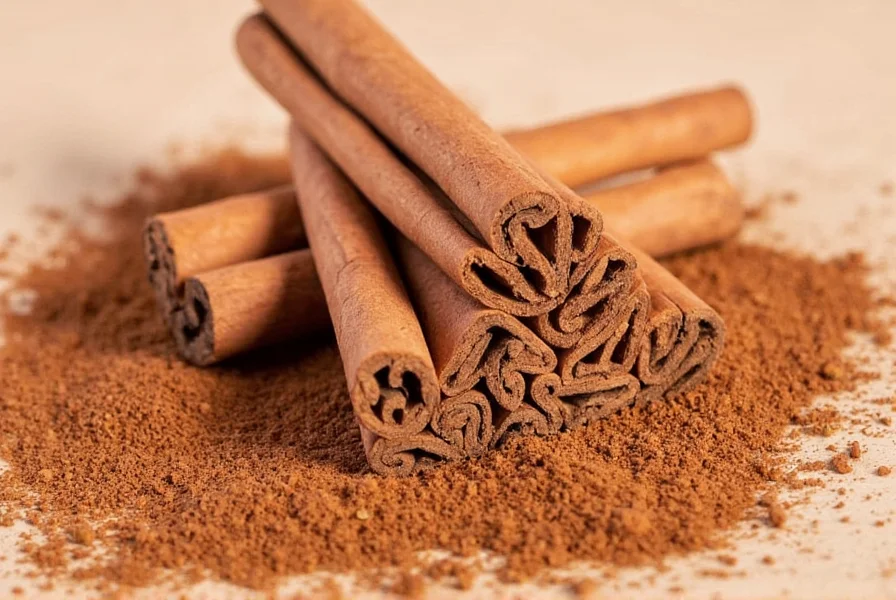When comparing Saigon cinnamon versus Ceylon cinnamon, understanding their fundamental differences is crucial for both culinary applications and health considerations. These two varieties represent distinct species within the cinnamon family, each with unique chemical compositions, flavor profiles, and safety implications that affect how and when you should use them.
Botanical Origins and Production
Saigon cinnamon, also known as Vietnamese cinnamon, comes from the Cinnamomum loureiroi tree primarily cultivated in Vietnam's central regions. This variety developed in the highlands near Hue, where ideal growing conditions produce cinnamon with exceptionally high essential oil content. Ceylon cinnamon, often labeled "true cinnamon," originates from Cinnamomum verum trees grown mainly in Sri Lanka (formerly Ceylon), with smaller productions in Madagascar and Brazil. The Sri Lankan government actually regulates Ceylon cinnamon production to maintain quality standards.
The harvesting methods differ significantly between these varieties. Saigon cinnamon bark is typically harvested in single thick quills that curl inward dramatically, while Ceylon cinnamon is carefully rolled into multiple thin layers creating a delicate, cigar-like structure. This structural difference affects how each type dissolves in cooking applications and releases flavor compounds.
| Characteristic | Saigon Cinnamon | Ceylon Cinnamon |
|---|---|---|
| Scientific Name | Cinnamomum loureiroi | Cinnamomum verum |
| Primary Growing Region | Vietnam | Sri Lanka |
| Bark Structure | Single thick quill (1-3mm) | Multiple thin layers (0.5mm) |
| Coumarin Content | High (6,000-12,000 ppm) | Low (40-350 ppm) |
| Cinnamaldehyde Content | 25-30% | 50-60% |
| Flavor Profile | Intense, spicy, hot | Sweet, citrusy, delicate |
| Price Comparison | $$ (More affordable) | $$$ (Premium pricing) |
Chemical Composition and Health Implications
The most critical difference between Saigon cinnamon vs Ceylon cinnamon lies in their coumarin content. Coumarin, a naturally occurring compound, can cause liver damage when consumed in high quantities over time. Saigon cinnamon contains dramatically higher levels—up to 60 times more coumarin than Ceylon cinnamon. Research published in the Journal of Agricultural and Food Chemistry found Saigon cinnamon averages 6,000-12,000 parts per million (ppm) of coumarin, while Ceylon cinnamon contains only 40-350 ppm.
For regular consumption, especially for children, pregnant women, or those with liver conditions, Ceylon cinnamon represents the safer choice. The European Food Safety Authority recommends a maximum daily coumarin intake of 0.1 mg per kilogram of body weight. Just one teaspoon of Saigon cinnamon powder can exceed this limit, while you'd need to consume significantly larger amounts of Ceylon cinnamon to reach concerning levels.

Culinary Applications and Flavor Profiles
When evaluating Saigon cinnamon versus Ceylon for cooking, their flavor characteristics determine optimal usage. Saigon cinnamon delivers an intense, spicy heat with pronounced sweetness that holds up well in robust recipes. Professional bakers often prefer Saigon cinnamon for snickerdoodles, chai blends, and spice cakes where its powerful flavor won't get lost. The higher cinnamaldehyde content (25-30%) creates that characteristic cinnamon "heat" that many associate with the spice.
Ceylon cinnamon offers a more complex flavor profile with subtle citrus notes and a delicate sweetness. Its lower cinnamaldehyde content (50-60% compared to Saigon's 25-30%) creates a milder experience that works beautifully in dishes where cinnamon should complement rather than dominate. Chefs recommend Ceylon cinnamon for custards, fruit compotes, delicate pastries, and beverages like hot chocolate where its nuanced flavor can shine.
Identifying Authentic Cinnamon Varieties
Distinguishing between Saigon cinnamon and Ceylon cinnamon requires careful observation. Saigon cinnamon typically appears as thick, tightly rolled single quills with a deep reddish-brown color and rough texture. When broken, it reveals a relatively solid interior. Ceylon cinnamon forms thinner, multi-layered quills with a lighter tan color and smoother texture. The interior shows distinct concentric layers, almost like tree rings.
Powdered cinnamon presents more challenges for identification. Saigon cinnamon powder tends to be darker and more vibrant red, while Ceylon powder appears lighter and more orange-tan. However, color alone isn't reliable as some producers mix varieties or add coloring. The most definitive test involves flavor—Ceylon cinnamon produces a sweeter, more complex taste with less intense heat.

Practical Usage Recommendations
Understanding when to use Saigon cinnamon versus Ceylon cinnamon can transform your cooking results. For baking applications requiring strong cinnamon presence—like cinnamon rolls, gingerbread, or spiced cookies—Saigon cinnamon delivers the intense flavor many expect. Its robust profile also works well in savory applications like Vietnamese pho or Moroccan tagines where it needs to stand up to other strong spices.
Ceylon cinnamon shines in more delicate applications. Use it in custards, rice puddings, or fruit-based desserts where you want cinnamon flavor without overwhelming heat. It's also preferable for daily consumption in coffee, oatmeal, or smoothies due to its lower coumarin content. Many professional pastry chefs maintain both varieties in their kitchens, selecting based on the specific recipe requirements rather than using one exclusively.
Economic and Availability Factors
When comparing Saigon cinnamon vs Ceylon cinnamon availability, Saigon generally proves more accessible and affordable. Vietnam produces approximately 80% of the world's cinnamon supply, making Saigon cinnamon widely available at standard grocery stores. Ceylon cinnamon represents only about 10-15% of global production, primarily coming from Sri Lanka, which contributes to its higher price point—often two to three times more expensive than Saigon varieties.
The price difference reflects both production costs and certification requirements. Authentic Ceylon cinnamon carries a certification mark from the Sri Lankan government, ensuring quality standards. When shopping for Ceylon cinnamon, look for the official logo from the Ceylon Cinnamon Association to verify authenticity, as mislabeling remains common in the spice industry.
Storage and Shelf Life Considerations
Both cinnamon varieties benefit from proper storage to maintain flavor intensity, though their different compositions affect longevity. Saigon cinnamon's higher oil content gives it a longer shelf life—up to two years when stored properly in an airtight container away from light and heat. Ceylon cinnamon, with its more delicate structure, begins losing flavor complexity after about 12-18 months.
Grinding cinnamon immediately before use maximizes flavor in both varieties, but this practice proves especially beneficial for Ceylon cinnamon. The essential oils responsible for its nuanced flavor profile dissipate more quickly after grinding compared to Saigon cinnamon's more robust compounds.
Final Considerations for Cinnamon Selection
Choosing between Saigon cinnamon and Ceylon cinnamon ultimately depends on your specific needs and intended use. For occasional baking where intense cinnamon flavor is desired, Saigon cinnamon offers excellent value and performance. When considering regular consumption for health benefits or in daily food preparation, Ceylon cinnamon's lower coumarin content makes it the wiser long-term choice.
Professional chefs and serious home cooks often maintain both varieties in their pantries, selecting based on the specific recipe requirements. Understanding these fundamental differences between Saigon cinnamon versus Ceylon cinnamon empowers you to make informed decisions that enhance both the flavor and safety of your culinary creations.











 浙公网安备
33010002000092号
浙公网安备
33010002000092号 浙B2-20120091-4
浙B2-20120091-4